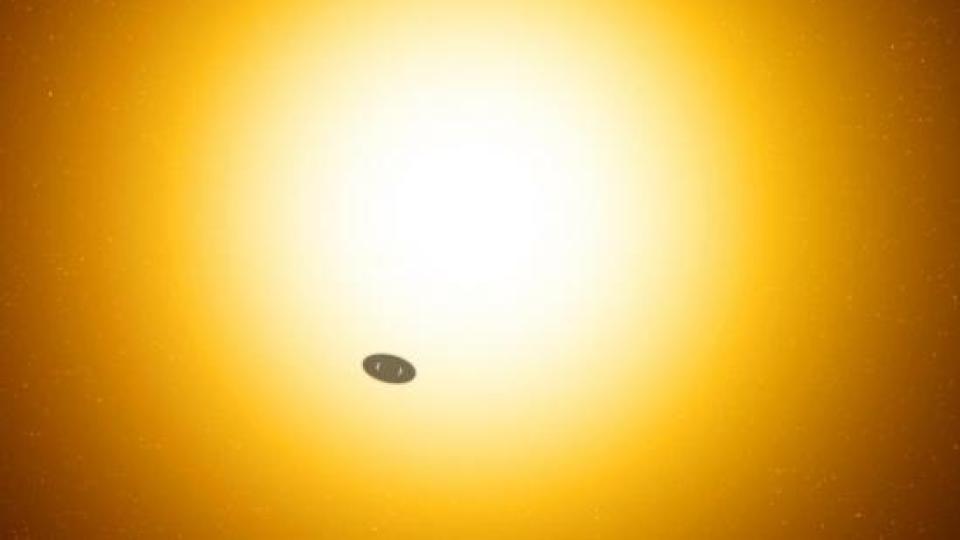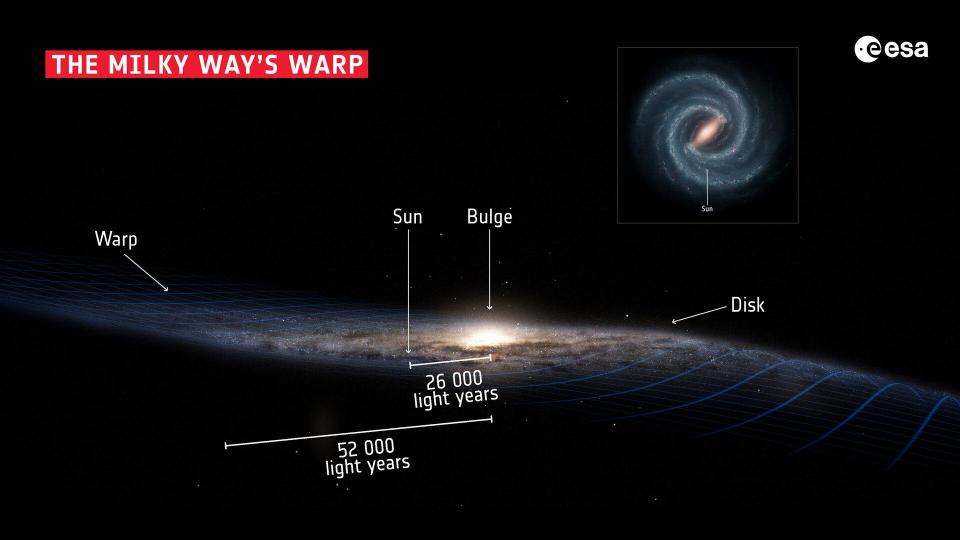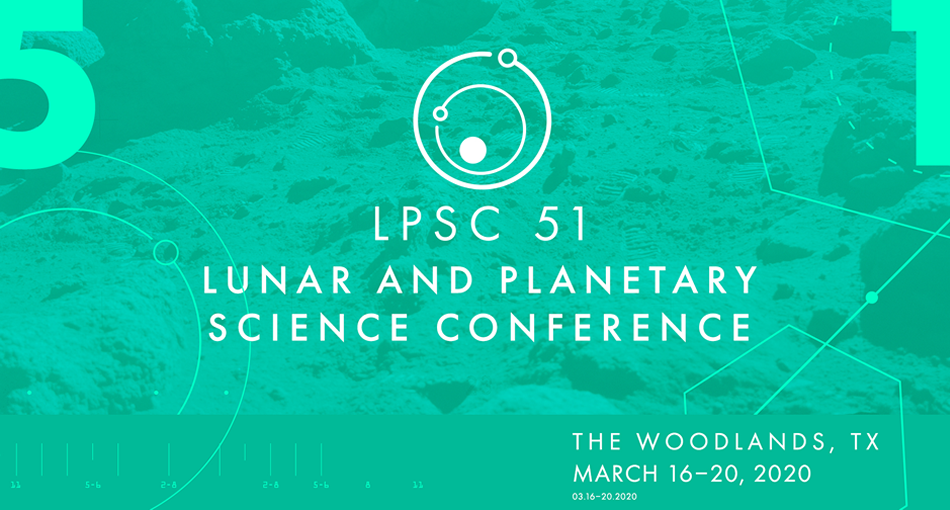This week’s news is weird. Cotton-Candy exoplanets called SuperPuffs may have rings, the Milky Way Galaxy may have been warped by a major collision, and conference cancellations and uncertainty are overwhelming the news this week.

- What If Mysterious “Cotton Candy” Planets Actually Sport Rings? (Carnegie Science)
Today’s first story uses words in ways I was not prepared to encounter in a press release. Astronomers have announced, and I quote, “‘cotton-candy-like’ exoplanets called super-puffs may actually have rings, according to new research published in The Astronomical Journal by Carnegie’s Anthony Piro and Caltech’s Shreyas Vissapragada.” Apparently, the one time astronomers decided to give something an awesome name and description, it is food- and fashion-related.
So what is a ‘super-puff’? If you try googling, you will learn it is one of the big puffy quilted jackets made popular by Eddie Bauer and Lululemon. If you google ‘super-puff planet’, you’ll find out they are planets whose size has been measured by studying how they transit their host star, and whose mass has been measured from how they gravitationally interact with their stars, and according to these combined measurements, have disturbingly low densities. I actually remember the first one being announced back in 2014, and talking to other folks about how the announced 0.1 grams per cubic centimeter masses being found simply made no sense. As our earlier quote implies, this is a bit like making a planet the density of cotton candy.
For some reason, we didn’t immediately jump to the thought “but what if these worlds have rings that make it seem like they are way bigger than they are and distort our measurements?” Well, while this didn’t occur to me or the speaker I remember listening to, it did occur to Piro and Vissapragada who have calculated that some but not all of the super puffs observed could be explained with familiar ring systems, and that with high enough quality observations, we may be able to observe the difference between a ringed world, and puffed-out world. Unfortunately, we’re going to need to wait for JWST to make those observations. For now, it’s comforting to know that these worlds have down-to-Earth – or at least down-to-Saturn – explanation.

Our second story of the day is one that actually sent me searching through my press releases, because it seems to be an update on prior results. A team using Gaia data to study the structure of our Milky Way galaxy has published a new paper in the journal Nature Astronomy, describing the warp of our galaxy and attributing it to a collision. Now, in general, galactic warps are thought to pretty much always come from a collision, so by itself this isn’t all that newsworthy. This team actually buried the lede, however, and in the third section of the release they contend that the Sagittarius dwarf galaxy might just be driving this warp with its ongoing merger into the Milky Way. Gaia’s amazingly precise measurements of stellar positions and motions have allowed them to not just trace out the shape of the Milky Way’s warp, but to also measure how it is moving. They have determined that the warp itself will appear to make one full precession about the galaxy every 600-700 million years, as it’s constitution stars move around our galaxy in bobbing orbits. The warp itself moves slower than the stars, which can complete a cycle in 200-300 million years. This story takes a known concept – collisions make warps – and paints in amazing details, showing once again that science is an incremental process.

This week is proving to be a slow news week, and I think that is in part triggered by so many people having a ‘WTF is going on with the world’ kind of week. Over the weekend, the American Physical Society cancelled their annual meeting less than a day before events for slated to start. Money was already spent, and a lot of people had already traveled. This triggered a collective scramble to figure out what other meetings are at risk, and we’re seeing a wild interest in sorting how to hold remote meetings. As we’ve mentioned before, our team is planning to take off next week so we can plan our coverage of the annual Lunar and Planetary Meeting in Houston. At this time that meeting is still planned. In looking into things, however, we’ve learned that many hotels and event centers don’t rationally allow cancellation for emergency unless it is within hours or days of the events start. This means we can tell you LPSC is still on, but it could be cancelled at the last minute as well, depending on how the corona virus evolves. We will do what we can to bring you the news, meeting or no meeting.
<———————>
And that rounds out our show for today.Thank you all for listening. Today’s script was written by Pamela Gay. The Daily Space is produced by Susie Murph, and is a product of the Planetary Science Institute, a 501(c)3 non profit dedicated to exploring our Solar System and beyond. We are here thanks to the generous contributions of people like you. Want to become a supporter of the show? Check us out at Patreon.com/cosmoquestx


 We record most shows live, on Twitch. Follow us today to get alerts when we go live.
We record most shows live, on Twitch. Follow us today to get alerts when we go live.